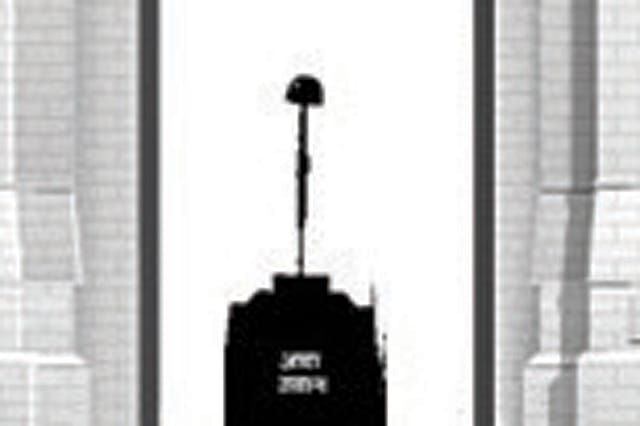Hindu-Muslim Fault Lines

POLITICIANS everywhere, in all ages, have been two-faced. So, let us not be hard on the present lot. They, too, like those who came before them, are human. These thoughts popped up in mind at a recent book launch at the India International Centre. The somewhat longish title of the book, Circles of Freedom: Friendship, Love and Loyalty in the Indian National Struggle, ought to have provided an inkling as to the evening's proceedings. The author, TCA Raghavan, who retired as high commissioner to Pakistan, was in conversation with former ambassador to the US, Navtej Sarna. The book makes a valid case for shifting the spotlight away from the usual greats of the freedom movement to the second and third-rung leaders. Because we know all that is knowable about Gandhi, Nehru, Patel, Ambedkar, et al. But little is known about Sarojini Naidu, Asaf Ali and Aruna Asaf Ali, Syud Hossain and a few others who played a vital role in the freedom struggle.
A clear message that comes through reading the book is that, contrary to secularist pretensions, under the skin, most leaders were communal in personal conduct. Though the book references Hindu-Muslim fault lines only during the freedom movement, these were present from the time of the Muslim invasion.
Raghavan explores private correspondences, diaries, letters, etc, of five such second-rung leaders to piece together a fascinating account of how, when it came to marital ties and romantic liaisons, the Hindu-Muslim divide was never far from the minds of Congress biggies. Despite the public pretence of Hindu-Muslim unity, the stark truth that stands out is that be it Gandhi or Motilal Nehru, or his son, Jawaharlal, or, for that matter, the lesser characters in the freedom struggle, all of them vehemently resisted Hindu-Muslim marriages.
2025 In Review
12 Dec 2025 - Vol 04 | Issue 51
Words and scenes in retrospect
You learn how Motilal Nehru was left aghast at the romance between "the 19-year-old Swarup Rani", his oldest daughter, "and Jawaharlal's younger sister with Syud Hossain." "Motilal and Gandhi worked together to put the clock back… a few months later she was married to Ranjit Pandit and in time would become Vijay Lakshmi Pandit…" As for Syud, he was sent off to London as part of a delegation and eventually settled in the US "as a kind of spokesperson for the Indian National Congress."
Then there is the marriage of Asaf Ali, a scion of an old Delhi aristocratic family, with Aruna Ganguly. He was already married when virtually on first sight, he fell head over heels for a teenaged Aruna Ganguly, 20 years his junior. Expectedly, Congress leaders were unhappy at the Hindu-Muslim bonding, but it was left to Sarojini Naidu to give voice to this opposition in a letter to another member of the anglicised club active in the freedom struggle. You get a flavor of the times from the headlines in the main English newspapers: 'Mohammedan to Marry a Hindu Girl'. Or, 'Hindu-Muslim Wedding'. A few days later, "at an Islamic ceremony Aruna now became Kulsum Zamani and was married to Asaf Ali."
Gleaning from the plethora of archival material, the book offers some more interesting nuggets about prominent leaders who coincidentally were Westernised in upbringing but locked in unhappy marriages. It is a public secret about Jawaharlal's marriage to Kamala Kaul. Asaf Ali's marriage to Aruna Ganguly, too, would soon flounder, with both going their separate ways. Sometime later, Jawaharlal's daughter Indira, despite his and Gandhi's stiff resistance, would marry Feroze Jehangir Gandhi, only for this relationship, too, to flounder a few years later. In an aside, I might mention a social media post which went round on Feroze Gandhi's death anniversary earlier this month. With a picture of the headstone on his grave, the caption read: "Here lies the world's most unfortunate man: His father-in-law was prime minister. So was his wife and son… yet he died a lonely man, unloved and uncared…"
Meanwhile, at the end of the engaging Raghavan-Sarna powwow, it was left to the irrepressible Mani Shankar Aiyar, another ex-diplomat in a crowd of such retirees, to get up and wonder aloud, "Why were all these leaders behaving communally?" The answer was because they were communal at heart. The difference lay in the fact that Jinnah used communalism in politics and had famously refused to shake Maulana Abul Kalam's hand, calling him a "sarkari Muslim". On the other hand, most Congress leaders talked of Hindu-Muslim unity in public while they were communal in private life. No wonder Jinnah dubbed Congress a Hindu party. Only after independence did Congress chant the secular mantra to create a Muslim vote bank.
